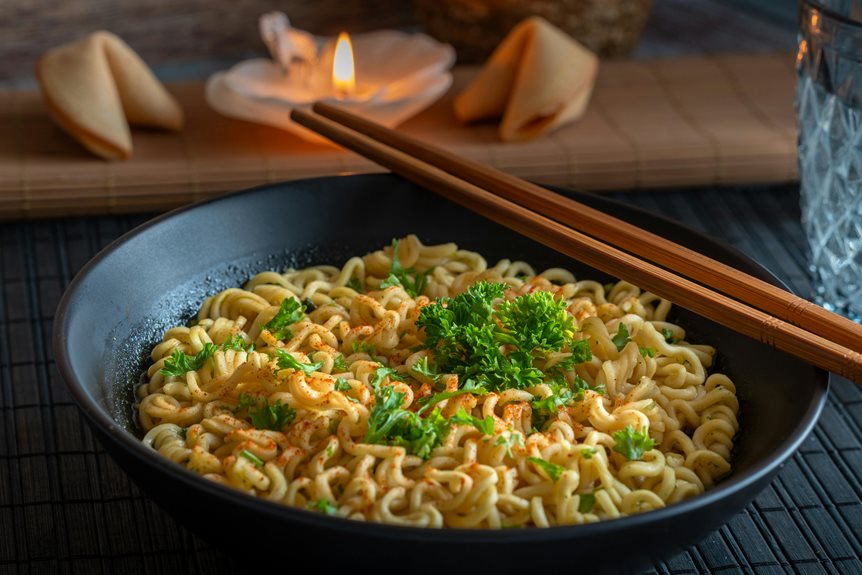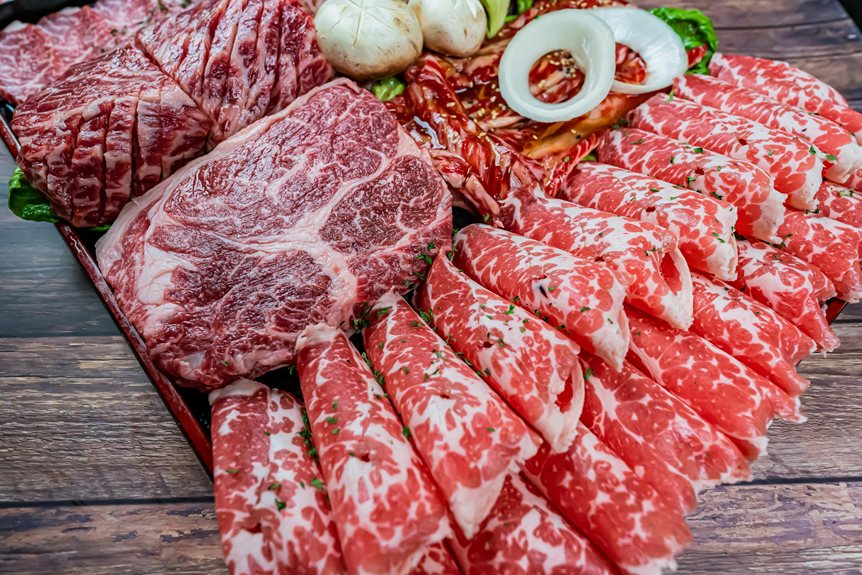Are you someone who loves Japanese cuisine but struggles to find gluten and dairy-free options?
Look no further! In this article, we will explore the world of traditional Japanese dishes that are naturally free from gluten and dairy.
We will also provide you with a list of common ingredients to watch out for and offer helpful tips for enjoying gluten and dairy-free Japanese food.
Get ready to discover innovative ways to savor the flavors of Japan without compromising your dietary needs.

Traditional Japanese Dishes That Are Naturally Gluten and Dairy Free
You can explore a variety of traditional Japanese dishes that are naturally gluten and dairy-free.
Japanese cuisine offers a range of innovative flavors and ingredients that cater to those with dietary restrictions.
One example is sushi, which typically consists of fresh fish, rice, and vegetables wrapped in seaweed.
Sashimi, thin slices of raw fish served without rice, is another option that’s naturally gluten and dairy-free.
Additionally, you can enjoy tempura, which is made by lightly battering and frying vegetables or seafood in gluten-free rice flour.
Another popular dish is miso soup, a flavorful broth made from fermented soybeans that’s both gluten and dairy-free.
With these traditional Japanese dishes, you can satisfy your craving for innovative flavors while maintaining a gluten and dairy-free diet.

Common Ingredients to Watch Out for in Japanese Cuisine
There are several common ingredients to watch out for in Japanese cuisine, such as soy sauce and mirin.
But if you desire innovation in your diet, don’t let that discourage you! Japanese cuisine offers a wide range of unique ingredients that can add a fresh twist to your meals.
Take wasabi, for example. This spicy green paste not only adds a kick to sushi, but it also has antibacterial properties.
Another ingredient to explore is yuzu, a citrus fruit that adds a tangy and refreshing flavor to dishes.
And let’s not forget about miso, a fermented soybean paste that can be used to create flavorful dressings and marinades.
With these innovative ingredients at your disposal, you can elevate your Japanese culinary experience to new heights.
So go ahead, embrace the possibilities, and create your own innovative Japanese dishes!

Tips for Enjoying Gluten and Dairy-Free Japanese Food
Try incorporating alternative ingredients like rice flour and coconut milk into your gluten and dairy-free Japanese dishes, as they can provide a delicious and satisfying substitute.
Japanese cuisine is known for its rich flavors and unique ingredients, but if you have dietary restrictions, it can be challenging to enjoy these dishes.
However, with a little innovation, you can still savor the taste of Japan while adhering to your gluten and dairy-free diet.
Instead of using wheat flour, try using rice flour to make your tempura batter or bread crumbs for katsu.
Coconut milk can be a great substitute for dairy milk in soups and sauces, adding a creamy and indulgent texture.
Don’t be afraid to get creative and experiment with different ingredients to create your own gluten and dairy-free Japanese culinary masterpieces.
Enjoy the flavors of Japan while staying true to your dietary needs.
Conclusion
Japanese cuisine offers a wide array of natural gluten and dairy-free options, from sushi and sashimi to miso soup and tempura.
While there are common ingredients to be cautious of, such as soy sauce, exploring innovative substitutes like wasabi, yuzu, and miso can enhance your culinary experience.
To fully enjoy gluten and dairy-free Japanese food, consider using alternative ingredients like rice flour and coconut milk to replicate traditional flavors.
With a bit of creativity, you can savor the delicious tastes of Japan without compromising your dietary needs.









Konnichiwa! (Hello!) I'm Pat Tokuyama, a Japanese tofu cookbook author, who travels for music, food, and adventure. If you like Japanese tea, checkout some of the newestorganic japanese tea, matcha bowls and noren and more!
** Curious about the Plant Based Japanese Cooking Club? ** Learn more here!